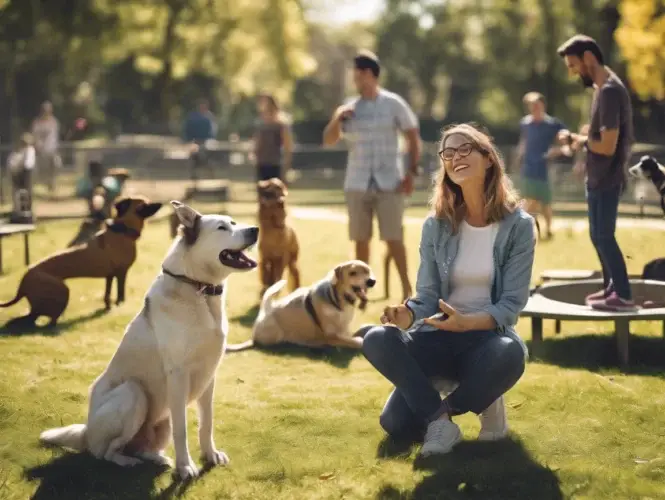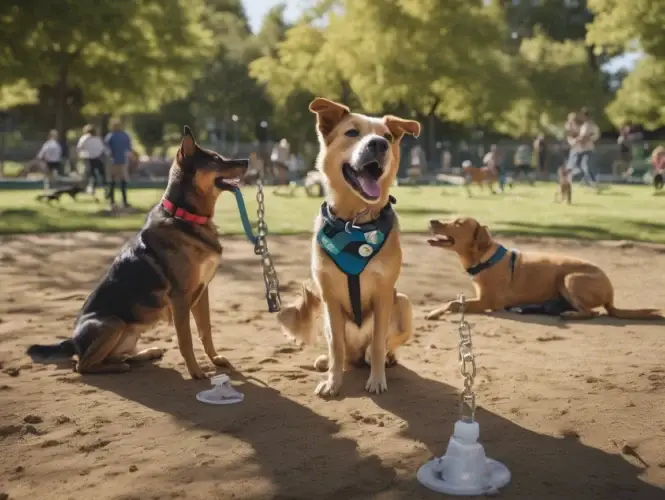Introduction
Visiting dog parks can be one of the most rewarding experiences for both you and your furry friend. However, navigating the social dynamics of dog parks requires understanding proper etiquette to ensure everyone has a positive experience. Whether you’re a first-time dog park visitor or looking to brush up on best practices, this comprehensive guide will help you become a responsible and welcome member of your local dog park community.
Pre-Visit Preparation
Health and Vaccination Requirements Before stepping foot in any dog park, ensure your dog is up-to-date on all vaccinations, including rabies, DHPP (distemper, hepatitis, parvovirus, parainfluenza), and bordetella. Many dog parks require proof of current vaccinations, and some may have additional requirements like flea and tick prevention. Contact your veterinarian to discuss which vaccines are recommended for your area.
Age and Training Considerations Most dog parks require dogs to be at least four months old and fully vaccinated. Your dog should have basic obedience training, including reliable recall commands. If your dog doesn’t come when called, practice this essential skill before visiting off-leash areas.
Timing Your Visit Consider visiting during less crowded times initially, such as weekday mornings or early afternoons. This allows your dog to acclimate to the environment without overwhelming social pressure. Peak times (evenings and weekends) can be more chaotic and aren’t ideal for nervous or inexperienced dogs.
Arrival and Entry Protocol
Observe Before Entering Take a few minutes to watch the dynamics inside the park. Look for signs of aggressive play, overcrowding, or any situations that might stress your dog. If you notice bullying behavior or overly rough play, consider waiting or visiting at a different time.
Leash Management Remove your dog’s leash immediately upon entering the off-leash area. Keeping a dog leashed while others run free can create frustration and potential conflict. However, keep the leash handy in case you need to quickly gain control of your dog.
Initial Introduction Period Allow your dog to decompress and explore the perimeter of the park before encouraging interaction with other dogs. This gives them time to assess the environment and other dogs present.
Monitoring Your Dog’s Behavior
Recognizing Play vs. Aggression Healthy dog play includes play bows, bouncy movements, and role reversals where dogs take turns being the chaser and the chased. Warning signs include stiff body language, prolonged mounting, resource guarding, or one dog consistently overwhelming another.
Reading Stress Signals Watch for signs your dog is overwhelmed: excessive panting, pacing, hiding behind you, or trying to leave the park. These signals indicate it’s time for a break or to end the visit.
Intervention Strategies If your dog becomes too excited or rough, call them away from the situation. Use treats or toys to redirect their attention. Never reach into the middle of a dog scuffle with your hands – instead, use distraction techniques or water if available.
Social Responsibilities
Supervising Your Dog Stay alert and engaged during the entire visit. Avoid distractions like phones or lengthy conversations that prevent you from monitoring your dog’s interactions. Your dog should always be within your sight and under your control.
Cleaning Up Always clean up after your dog immediately. Bring waste bags and dispose of them properly. Even in large parks, leaving waste is unsanitary and disrespectful to other users.
Respecting Other Dogs and Owners Not every dog wants to interact, and that’s perfectly normal. Teach your dog to respect other dogs’ space and don’t force interactions. Similarly, always ask permission before petting someone else’s dog.
Common Mistakes to Avoid
Bringing Inappropriate Items Avoid bringing toys, treats, or food into the main play area, as these can trigger resource guarding behaviors. Save special items for training sessions outside the park.
Overcorrecting Other Dogs Never discipline or correct someone else’s dog. If you have concerns about another dog’s behavior, speak directly with their owner or contact park management if necessary.
Staying Too Long Most dogs benefit from 30-60 minute visits. Overstimulation and exhaustion can lead to poor decision-making and increased likelihood of conflicts.
Special Considerations
Small Dog Areas Many parks have separate areas for small dogs (typically under 30 pounds). Use these spaces appropriately – they exist for safety reasons, not convenience.
Weather Conditions Be mindful of weather conditions. Hot pavement can burn paw pads, and dogs can overheat quickly in summer. In winter, watch for signs of cold stress and consider protective gear for sensitive dogs.
Introducing Shy or Reactive Dogs If your dog is nervous or reactive, consider visiting during off-peak hours or working with a professional trainer before attempting group play.
Building Positive Relationships
Getting to Know Regular Visitors Building relationships with other regular park users creates a supportive community. These connections can lead to playdate opportunities and valuable advice about local veterinarians and dog services.
Sharing Local Knowledge As you become familiar with your local dog park, share helpful information with newcomers about park rules, peak times, and community norms.
Conclusion
Dog park etiquette is ultimately about respect – for other dogs, their owners, and the shared space you all enjoy. By following these guidelines, you’ll help maintain a positive environment where all dogs can safely exercise and socialize. Remember that every visit is a learning opportunity, both for you and your dog. Start slowly, stay engaged, and enjoy watching your dog develop confidence and social skills in this wonderful community resource.


